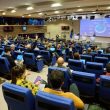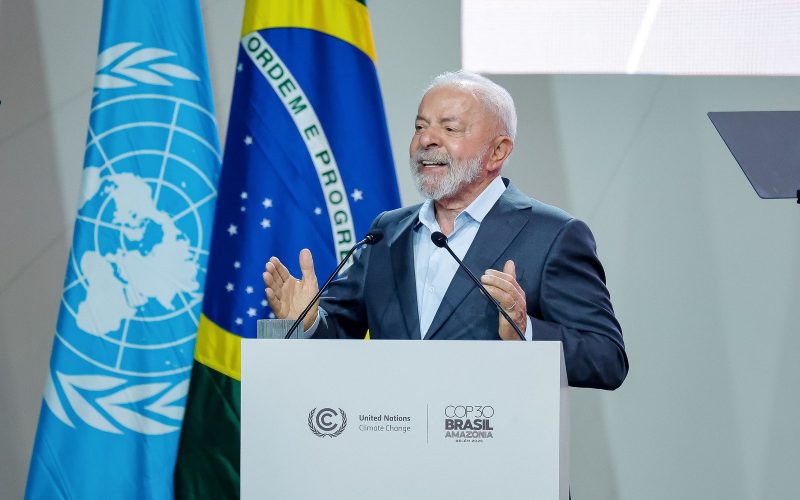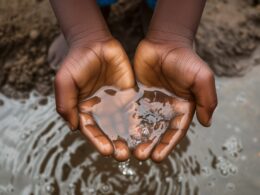The 30th Conference of the Parties to the United Nations Framework Convention on Climate Change (COP30) opened on November 10 in Belém, in Brazil’s Pará state — in the heart of the Amazon. For the first time, the world’s main climate summit is being held in a region that symbolises both the urgency and the promise of global climate action. Over two weeks, leaders, negotiators, and civil society will work to turn commitments into action and strengthen alliances for a more sustainable future.
The Amazon at the centre of global climate debate
At the opening ceremony, President Luiz Inácio Lula da Silva described hosting COP30 in Belém as “a political and symbolic decision,” underscoring that the Amazon must be recognised as central to solving the climate crisis.
“The most diverse biome on Earth is home to nearly fifty million people, including four hundred Indigenous peoples. The Amazon is not an abstraction — it is home, it is economy, it is culture, it is life,” Lula said.
The President identified three guiding pillars for the negotiations: fulfilling existing commitments, strengthening global governance, and putting people at the centre of climate policy. He proposed the creation of a Global Climate Council, linked to the UN General Assembly, to improve coordination and accountability. Lula also called COP30 the COP of Truth and the COP of Implementation, urging countries to translate pledges into measurable progress.
“We are moving in the right direction, but at the wrong speed,” he said, citing recent floods in southern Brazil and hurricanes in the Caribbean as examples of escalating impacts. “Climate change is a tragedy of the present. It is time to deliver yet another defeat to denialism.”
A call for collective action
Newly elected COP30 President Ambassador André Corrêa do Lago said the conference marks “a historic transition — the decade of Paris Agreement implementation.”
“This COP must be remembered as the COP of Action — one that turns commitments into results. It is time to integrate climate, economy, and development, creating jobs, reducing inequalities, and strengthening trust among nations.”
He thanked the Brazilian government and organisers for their cooperation, describing COP30 as the result of a mutirão — a Brazilian term meaning “collective effort.”
UN Climate Chief Simon Stiell called COP30 a turning point.
“We are at the mouth of the world’s largest river, and what it teaches us is that great results come from the convergence of many flows. COP must function the same way — driven by cooperation and courage. Renewables have already surpassed coal as the world’s main energy source. Now it is time to turn ambition into action.”
Technology and innovation take centre stage
Technology dominated Day 1 discussions. The Green Digital Action Hub and AI Climate Institute (AICI) were launched to help developing countries access data, tools, and training for digital climate solutions. AICI will offer online resources and training on artificial intelligence for adaptation and mitigation planning.
At the Agricultural Innovation Showcase, Brazil, the UAE, and the Gates Foundation announced US$2.8 billion in funding for farmer adaptation and food system resilience. The partnership also unveiled the world’s first open-source AI Large Language Model for agriculture, which will support 100 million farmers by 2028 with real-time insights for climate-smart decisions.
“Agricultural innovation is the engine of climate resilience,” said Martin van Nieuwkoop, Director of Agricultural Development at the Gates Foundation.
Advances in adaptation and finance
The Fund for Responding to Loss and Damage (FRLD), established at COP28, was operationalised in record time, launching its first US$250 million call for proposals. “Loss and Damage, which was only recently established, has started working,” said Ana Toni, CEO of COP30.
Multilateral Development Banks (MDBs) announced they had doubled support for adaptation investments, providing over US$26 billion to low- and middle-income economies in 2024. They also launched a framework for nature finance to guide investments and improve transparency.
The Belém Declaration on Hunger and Poverty, endorsed by 44 countries, introduced the Climate-Resilient Social Protection and Smallholder Agriculture Finance Partnership, which will support climate adaptation efforts in Benin, Ethiopia, Kenya, Zambia, and the Dominican Republic.
Digital and nature-based initiatives
The Nature’s Intelligence Studio, led by the University of Oxford’s TIDE Centre, INPA, and the Development Bank of Latin America (CAF), will advance bio-inspired innovation and protect local intellectual property.
The Digital Public Goods Alliance (DPGA) and Brazil’s Ministry of Management launched a Climate Digital Public Goods Collection, offering open-source tools for adaptation in 30 countries. The DPI for People and Planet Innovation Challenge awarded US$100,000 each to five organisations — Trust Carbon, Kazam, Akvo, Rahat, and Circularise — for developing digital solutions to strengthen resilience.
Building resilience and youth engagement
The Race to Resilience campaign reported that 437 million people now benefit from improved climate protection, supported by US$4.18 billion in adaptation finance and the conservation of 18 million hectares of land and ecosystems.
COP30’s Green Zone opened with record participation from civil society and youth. “This is the COP with the highest participation of children and young people in the past three years,” said Mikaelle Farias of the COP30 Youth Climate Champion team.
As negotiations move into Day 2, attention will shift to local and regional implementation, highlighting how cities and communities are translating national climate pledges into practical action.





















